For much of the 2018-19 season, Real Madrid’s campaign has been driven by pessimism and trepidation.
From mediocre performances on the field to a lack of purpose off it, the Los Blancos found themselves entrenched in a diatribe with a swathe of negative opinions from fans and critics alike.
But the return of the clubs’s favourite son Zinedine Zidane after his dignified exit nine months ago has cut through all the noise, at least for the time being. Zizou’s work is cut out for him as the rebuilding job at a club like Real Madrid, with extremely high expectations, won’t be an easy task by any stretch of the imagination.
https://twitter.com/kevinchimuka/status/1113392173150502914
However, unlike towards the end of his last tenure, Zidane will have financial backing from the club. A report from The Independent claimed “Real Madrid president Florentino Perez has promised Zidane an expensive overhaul,” immediately after the Frenchman’s arrival. A few days later L’Equipe’s front page (titled Casino Royal) stated that:
“Perez is ready to show faith in Zidane to turn the ship around by giving him a €500 million summer budget.”
If Madrid are keen on spending heavily in the upcoming summer transfer window, they will have to do it wisely, bearing in mind their current expectations and without compromising future ambitions.
Defence
Real Madrid’s defence is, arguably, the least concerning aspect of their squad. Sergio Ramos and Raphael Varane might not have had the best of seasons, but they still form a formidable pairing in the centre of defence.
But with Ramos aging and especially if Varane decides to leave, Madrid would need adequate replacements in order to beef up their backline options.
Looking at the options, three names stand out in particular. These include Napoli’s Kalidou Koulibaly (27), Inter Milan’s Milan Skriniar (24) and Ajax’s Matthijs de Ligt (19).
[caption id="" align="alignnone" width="600"] Kalidou Koulibaly during the Serie A match between US Sassuolo and SSC Napoli at Mapei Stadium - Citta' del Tricolore on March 10, 2019 in Reggio nell'Emilia, Italy. Photo: Getty[/caption]
All three have no obvious weaknesses and possess the ideal skill set expected from a defender (strength, positioning and ball playing skills), supplemented by the fact that they are young enough to be part of the club for a very long time.
While Madrid would be happy to bring in any one of these players, Skriniar would be cheaper as compared to the other two, considering the absence of a release clause in his contract with Inter.
[caption id="" align="alignnone" width="600"] Milan Skriniar of FC Internazionale competes for the ball with Danny da Costa of Eintracht Frankfurt during the UEFA Europa League Round of 16 Second Leg match between FC Internazionale and Eintracht Frankfurt at San Siro on March 14, 2019 in Milan, Italy. Photo: Getty[/caption]
The 24-year-old also offers an added dimension of having played as a defensive midfielder with the Slovakian national side, and consequently can provide cover on two positions while also aiding in-game tactical switch.
Midfielders
Real Madrid have a substantial amount of talent in the centre of the park, with an impressive blend of young (Marcos Llorente, Fede Valverde and Dani Ceballos) and experienced players (Luka Modric, Toni Kroos and Casemiro).
In order to cater to an aging Modric and take off pressure from Kroos, Madrid need a couple of additions to their midfield. However, they don’t need to spend heavily in this regard as the players they have loaned out – James Rodriguez to Bayern Munich and Mateo Kovacic to Chelsea – will be ideal suitors.
Rodriguez’s incisiveness in the final third, both in open play and dead ball situations, will add creativity in central positions. This is of particular importance because a majority of Madrid’s attacks are wing-based, which is why the Colombian’s presence will stretch opposing defences and bring more unpredictability going forward. Also, through his quotes in the press, the midfielder has also indicated that there is no love lost between him and the Spanish giants, despite being left frustrated for playing time under Zidane previously.
[caption id="" align="alignnone" width="600"] James Rodriguez of FC Bayern Muenchen controls the ball during the Bundesliga match between FC Bayern Muenchen and 1. FSV Mainz 05 at Allianz Arena on March 17, 2019 in Munich, Germany. Photo: Getty[/caption]
Kovacic might not have had the best of seasons at Chelsea, but he can still play a vital role in The Whites midfield with his ability to play line-breaking passes; a trait which is of pivotal importance, especially against many La Liga sides who like to sit deep and defend. Also, the Croatian’s best time in Madrid colours came while playing under Zizou, which makes a strong case of having him back in the Spanish capital.
[caption id="" align="alignnone" width="600"] Mateo Kovacic of Chelsea in action during the FA Cup Fifth Round match between Chelsea and Manchester United at Stamford Bridge on February 18, 2019 in London, United Kingdom. Photo: Getty[/caption]
Forwards
Ever since the departure of club legend Cristiano Ronaldo, the talk surrounding Real Madrid’s attacking pedigree has shown no signs of subsiding. Since the departure of the Portuguese, the goals have significantly dried up for the Los Blancos and hence the need for some clinical finishers in front of the goal is, probably, more than ever.
Talking about forwards, one player that has constantly been linked with Real Madrid is Chelsea’s Eden Hazard. Although there is no doubt about the Belgium international’s footballing prowess and he will also be a seamless fit at Real, signing him now, at the age of 28, would mean the club shelling a lot of money in return for only two to three peak years. While it would be unfair to totally rule out a move, the club should only consider Hazard as a fall-back option.
[caption id="" align="alignnone" width="600"] 31st March 2019, Cardiff City Stadium, Cardiff, Wales; EPL Premier League football, Cardiff City versus Chelsea; Eden Hazard of Chelsea looks back at a missed chance. Photo: Getty[/caption]
Moving on, Paris Saint-Germain’s (PSG) Kylian Mbappe, despite being an ideal solution to Real Madrid’s goal scoring troubles, is a long shot considering his massive price tag. Although there are plenty of rumours in the transfer market regarding his move to Spain, the French club will go all out to keep the 20-year-old star at the club, keeping in mind the fact that he is at the core of their European ambitions.
[caption id="" align="alignnone" width="600"] Kylian Mbappe of PSG celebrates a goal during the Ligue 1 match between Paris Saint Germain and Guingamp at Parc des Princes on January 19, 2019 in Paris, France. Photo: Getty[/caption]
Taking into account all the factors and realistic options available on the market, Real Madrid will be better off if they work on the lines of signing Liverpool’s Sadio Mane and Inter Milan’s Mauro Icardi.
Mane’s pace and technical ability has been part and parcel of Liverpool’s success in the past couple of seasons, and he will add a lot of potency to Real Madrid’s attack. Although he has played mostly as a winger for The Reds, if need be, he can play in a more central role as a striker as well. In Mane, Madrid will find a willing worker, who can track back and help out with defence and also link up well with Marcelo Vieira on the left wing.
[caption id="" align="alignnone" width="600"] Sadio Mane of Liverpool FC runs with the ball during the Premier League match between Liverpool FC and Tottenham Hotspur at Anfield on March 31, 2019 in Liverpool, United Kingdom. Photo: Getty[/caption]
On the other hand, Icardi has stacked up some great numbers for his Italian club with his lethal finishing. He may not participate much in build-up play but his positioning and movement in front of the goal is particularly impressive. Real Madrid have been guilty of creating lots of chances but not converting them during the ongoing season, but Icardi’s signing should go a long way in changing that.
[caption id="" align="alignnone" width="600"] Mauro Icardi of FC Internazionale scores the second goal during the Serie A match betweenGenoa CFC and FC Internazionale at Stadio Luigi Ferraris on April 3, 2019 in Genoa, Italy. Photo: Getty[/caption]
To Madrid and Zidane’s advantage, being knocked out of the title race on all fronts is somewhat a blessing in disguise, as it gives them additional time to plan for the future. But the 13-time European Champions will have to be clever with the way they go about their business in the transfer market, before it builds up more scar tissue against their name as a formidable force in the world of football.

 Unfortunately, nowadays I feel Saif Ali Khan’s performance is a bleak reminder of the hero he was in the 90s – none of the movies he is doing have any nostalgic value or cinematic value nor have they brought in good business; examples being Humshakals and Bullet Raja.
On the contrary, Govinda, who was seen in a negative role in Kill Dil recently, has re-launched himself with a bang, with critics applauding his work. This time, in the movie Happy Ending, Govinda is all set to play for the front-row audience. After all, he’s the king of comedy. Let’s see if they both, Govinda and Saif, got their share of brownies this time!
[embed width="620"]http://www.dailymotion.com/video/x27lxrt_happy-ending-2014-hindi-movie-official-trailer-%E1%B4%B4%E1%B4%B0_shortfilms#from=embediframe[/embed]
Happy Ending is based on the life of a writer called Yudi (Saif Ali Khan), who published his last book five and a half years ago which turned out to be a major hit. Unfortunately, after that, he couldn’t publish any book and making ends meet became a task. His stardom, as a writer, starts to fade away and then enters a new romantic author in the limelight of the literary world called Aanchal (Ileana D’Cruz). Aanchal gets everything that Yudi once had as an upcoming writer.
Unfortunately, nowadays I feel Saif Ali Khan’s performance is a bleak reminder of the hero he was in the 90s – none of the movies he is doing have any nostalgic value or cinematic value nor have they brought in good business; examples being Humshakals and Bullet Raja.
On the contrary, Govinda, who was seen in a negative role in Kill Dil recently, has re-launched himself with a bang, with critics applauding his work. This time, in the movie Happy Ending, Govinda is all set to play for the front-row audience. After all, he’s the king of comedy. Let’s see if they both, Govinda and Saif, got their share of brownies this time!
[embed width="620"]http://www.dailymotion.com/video/x27lxrt_happy-ending-2014-hindi-movie-official-trailer-%E1%B4%B4%E1%B4%B0_shortfilms#from=embediframe[/embed]
Happy Ending is based on the life of a writer called Yudi (Saif Ali Khan), who published his last book five and a half years ago which turned out to be a major hit. Unfortunately, after that, he couldn’t publish any book and making ends meet became a task. His stardom, as a writer, starts to fade away and then enters a new romantic author in the limelight of the literary world called Aanchal (Ileana D’Cruz). Aanchal gets everything that Yudi once had as an upcoming writer.
 Soon after, Armaan (Govinda) comes into Yudi’s life. Armaan is the superstar of Bollywood and wants Yudi to write a fresh script (copy of multiple Hollywood blockbusters) for him. Having no other choice, Yudi accepts his offer and starts to alter his lifestyle and terms. The rest of the movie is the journey of how Yudi, as a writer and a person, learns how to end some things and start new things.
Soon after, Armaan (Govinda) comes into Yudi’s life. Armaan is the superstar of Bollywood and wants Yudi to write a fresh script (copy of multiple Hollywood blockbusters) for him. Having no other choice, Yudi accepts his offer and starts to alter his lifestyle and terms. The rest of the movie is the journey of how Yudi, as a writer and a person, learns how to end some things and start new things.
 Performances wise, Saif stands tall and delivers a dependable performance. One can easily recall the comfort he had in the movies Cocktail and Love Aaj Kal.
Govinda, as always, is hilarious and owns every scene he is featured in.
Performances wise, Saif stands tall and delivers a dependable performance. One can easily recall the comfort he had in the movies Cocktail and Love Aaj Kal.
Govinda, as always, is hilarious and owns every scene he is featured in.
 Nachcho Saaray G Phaar Kay is a song of the film that provided the perfect entertainment to the audience and credit for that goes solely to Govinda. It wouldn’t be wrong to say that if given a good script and the opportunity of outdoing himself, Govinda can still be in the race of the most entertaining actors in the industry. Kalki Koechlin is a revelation, she looks adorable, highly irritating and fits her role perfectly. Ileana is okay too; in fact, she is improving as an actress and is able to handle serious roles quite well.
[embed width="620"]http://www.dailymotion.com/video/x28elez_g-phaad-ke-official-full-song-video-happy-ending-govinda-saif-ali-khan-ileana_music[/embed]
Ranvir Shorey, who plays Saif’s best friend, delivered some good performance. Some of his scenes are truly amazing, especially, (spoiler alert) the scene where his wife tells him that she’s pregnant. There are some surprise packages in the movie like appearances by Kareena Kapoor and Preity Zinta. Preity has an extended role and she looks good but the fact that she is ageing is pretty obvious.
Nachcho Saaray G Phaar Kay is a song of the film that provided the perfect entertainment to the audience and credit for that goes solely to Govinda. It wouldn’t be wrong to say that if given a good script and the opportunity of outdoing himself, Govinda can still be in the race of the most entertaining actors in the industry. Kalki Koechlin is a revelation, she looks adorable, highly irritating and fits her role perfectly. Ileana is okay too; in fact, she is improving as an actress and is able to handle serious roles quite well.
[embed width="620"]http://www.dailymotion.com/video/x28elez_g-phaad-ke-official-full-song-video-happy-ending-govinda-saif-ali-khan-ileana_music[/embed]
Ranvir Shorey, who plays Saif’s best friend, delivered some good performance. Some of his scenes are truly amazing, especially, (spoiler alert) the scene where his wife tells him that she’s pregnant. There are some surprise packages in the movie like appearances by Kareena Kapoor and Preity Zinta. Preity has an extended role and she looks good but the fact that she is ageing is pretty obvious.
 The dialogues are fresh, some of which require reading between the lines, but they go along with the mood of the movie. Content wise, Happy Ending will make you feel ‘happy’ at the ‘end’ of the movie. It’s an entertaining romantic comedy with a few hummable songs.
The dialogues are fresh, some of which require reading between the lines, but they go along with the mood of the movie. Content wise, Happy Ending will make you feel ‘happy’ at the ‘end’ of the movie. It’s an entertaining romantic comedy with a few hummable songs.
 I would rate it a 3.5 out of five on the basis of decent performances, a good script, nice music and lightness of the theme.
And no, it’s not based on the American TV show, Californication, which most people think it is.
I would rate it a 3.5 out of five on the basis of decent performances, a good script, nice music and lightness of the theme.
And no, it’s not based on the American TV show, Californication, which most people think it is.

 *LT stands for ‘laugh track’ or multi-camera setup shows. No LT means ‘no laugh track’ or single-camera setups. **GLEE is not necessarily a comedy but the award category says musicals and comedy.[/caption]
The single-camera setup shows have enjoyed their
*LT stands for ‘laugh track’ or multi-camera setup shows. No LT means ‘no laugh track’ or single-camera setups. **GLEE is not necessarily a comedy but the award category says musicals and comedy.[/caption]
The single-camera setup shows have enjoyed their 
 Photo: Katti Batti Facebook Page[/caption]
What happens next? Will these two lead characters have a happy ending? Or would they end up living separate lives? Thank me for not divulging any spoilers, for the very few who intend to watch the movie.
In terms of acting and screen presence, Kangana Ranaut is extremely natural and comfortable in her role. She has proven herself as an actress by the likes of Queen and the Tanu Weds Manu series, but unfortunately, her brilliance could not shine through because of the convoluted script.
[caption id="" align="alignnone" width="400"]
Photo: Katti Batti Facebook Page[/caption]
What happens next? Will these two lead characters have a happy ending? Or would they end up living separate lives? Thank me for not divulging any spoilers, for the very few who intend to watch the movie.
In terms of acting and screen presence, Kangana Ranaut is extremely natural and comfortable in her role. She has proven herself as an actress by the likes of Queen and the Tanu Weds Manu series, but unfortunately, her brilliance could not shine through because of the convoluted script.
[caption id="" align="alignnone" width="400"] Photo: Katti Batti Facebook Page[/caption]
Imran Khan too tries hard but it seems he can’t get out of his debut movie
Photo: Katti Batti Facebook Page[/caption]
Imran Khan too tries hard but it seems he can’t get out of his debut movie  Photo: Katti Batti Facebook Page[/caption]
The rest of the cast members are just hanging in the scenes to make the movie progress since none of them deliver any performances which stick out of the mundane mediocrity that is this movie. The biggest flaw of the movie is that the trailer and the songs make the audiences expect that this movie will send you in throngs of laughter and greet you with a plethora of memorable, quirky one-liners, but let me tell you, this is just a façade.
In terms of music, few songs stand out more than the others, specifically Sarphira and Lips to Lips De Kissiya; others just don’t ring a bell or leave an impact.
[embed width="620"height]http://www.dailymotion.com/video/x31pra9[/embed]
[embed width="620"height]http://www.dailymotion.com/video/x351qfm[/embed]
Tushar Ray’s cinematography in the movie is praiseworthy, but the aesthetics in any movie are secondary and doesn’t add anything to the overall feel of the movie, especially when the foundation of the movie is weak.
I would suggest you pass the offer to go watch Katti Batti; perhaps you can watch it in the coming months either on a DVD or playing on your television screens. The uneven pacing, poorly constructed dialogues, incoherent sense of direction that even the very talented Ranuat couldn’t salvage it from doom. Audiences will feel totally cheated and wouldn’t bother wasting their money when they walk out of theatres.
[caption id="" align="alignnone" width="576"]
Photo: Katti Batti Facebook Page[/caption]
The rest of the cast members are just hanging in the scenes to make the movie progress since none of them deliver any performances which stick out of the mundane mediocrity that is this movie. The biggest flaw of the movie is that the trailer and the songs make the audiences expect that this movie will send you in throngs of laughter and greet you with a plethora of memorable, quirky one-liners, but let me tell you, this is just a façade.
In terms of music, few songs stand out more than the others, specifically Sarphira and Lips to Lips De Kissiya; others just don’t ring a bell or leave an impact.
[embed width="620"height]http://www.dailymotion.com/video/x31pra9[/embed]
[embed width="620"height]http://www.dailymotion.com/video/x351qfm[/embed]
Tushar Ray’s cinematography in the movie is praiseworthy, but the aesthetics in any movie are secondary and doesn’t add anything to the overall feel of the movie, especially when the foundation of the movie is weak.
I would suggest you pass the offer to go watch Katti Batti; perhaps you can watch it in the coming months either on a DVD or playing on your television screens. The uneven pacing, poorly constructed dialogues, incoherent sense of direction that even the very talented Ranuat couldn’t salvage it from doom. Audiences will feel totally cheated and wouldn’t bother wasting their money when they walk out of theatres.
[caption id="" align="alignnone" width="576"] Photo: Katti Batti Facebook Page[/caption]
Thank god, the prior name of this movie,
Photo: Katti Batti Facebook Page[/caption]
Thank god, the prior name of this movie,  I would rate it a three out of 10 and that’s me being generous.
I would rate it a three out of 10 and that’s me being generous.
 1. Diyar-e-Dil
[caption id="" align="alignnone" width="600"]
1. Diyar-e-Dil
[caption id="" align="alignnone" width="600"] Photo: Diyar-e-Dil- Facebook[/caption]
With a cast so strong, there is absolutely no way that the audience would not be hooked to the drama serial after the trailer.
Photo: Diyar-e-Dil- Facebook[/caption]
With a cast so strong, there is absolutely no way that the audience would not be hooked to the drama serial after the trailer. 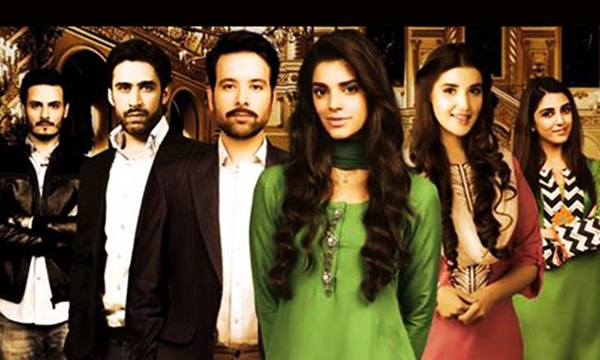 Photo: Facebook[/caption]
Diyar-e-Dil revolved around domestic matters and at some points, stirred emotions in families sitting at home but I feel the drama, overall, lacked provoking content. Yet, the viewers loved Agha Jaan and his gorgeous grandson!
2. Mera Naam Yousuf Hai
[caption id="" align="alignnone" width="600"]
Photo: Facebook[/caption]
Diyar-e-Dil revolved around domestic matters and at some points, stirred emotions in families sitting at home but I feel the drama, overall, lacked provoking content. Yet, the viewers loved Agha Jaan and his gorgeous grandson!
2. Mera Naam Yousuf Hai
[caption id="" align="alignnone" width="600"] Photo: Mera Naam Yousuf Hai - Facebook[/caption]
Mera Naam Yousuf Hai is a story of fierce love, hatred, money driven characters, pain and sacrifice for love. The drama touched upon the conflicts and
Photo: Mera Naam Yousuf Hai - Facebook[/caption]
Mera Naam Yousuf Hai is a story of fierce love, hatred, money driven characters, pain and sacrifice for love. The drama touched upon the conflicts and  Photo: Nikah - Facebook[/caption]
It has become a culture prevalent in our society to get our children married off before they go abroad to study. But what happens if you grow up and have a different set of ideas, priorities and taste? Well, this is an issue portrayed in this drama.
This serial is best for people who crave family drama, revenge and romance!
4. Alvida
[caption id="" align="alignnone" width="600"]
Photo: Nikah - Facebook[/caption]
It has become a culture prevalent in our society to get our children married off before they go abroad to study. But what happens if you grow up and have a different set of ideas, priorities and taste? Well, this is an issue portrayed in this drama.
This serial is best for people who crave family drama, revenge and romance!
4. Alvida
[caption id="" align="alignnone" width="600"] Photo: Alvida - Facebook[/caption]
This is for the romantics out there! What do we want more than a couple with great chemistry? The Dil-e-Muztar couple has set fire to the screen again with yet another enthralling performance and a great story. The villains of the drama made the serial hard hitting and interesting. The psychotic thrill by Zahid Ahmed as Rameez added the twist in the simple love story. Not only Rameez but also Fareesa was a well thought character that made this serial a hit!
5. Aik Thi Misaal
[caption id="" align="alignnone" width="600"]
Photo: Alvida - Facebook[/caption]
This is for the romantics out there! What do we want more than a couple with great chemistry? The Dil-e-Muztar couple has set fire to the screen again with yet another enthralling performance and a great story. The villains of the drama made the serial hard hitting and interesting. The psychotic thrill by Zahid Ahmed as Rameez added the twist in the simple love story. Not only Rameez but also Fareesa was a well thought character that made this serial a hit!
5. Aik Thi Misaal
[caption id="" align="alignnone" width="600"]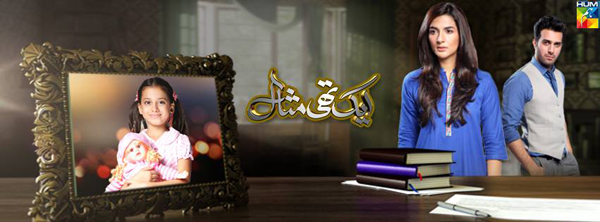 Photo: Aik Thi Misaal - Facebook[/caption]
This is the tale of a child who comes from a broken family, Misaal is abandoned by her mother and then is mistreated by her father as both the divorced parents are busy in their own lives with spouses and family. This drama gained a fair share of popularity for its great theme!
This serial opened a window for the audience to have soft and empathising corner for those children who have suffered and are in need of care. The character, Misaal, is the epitome for such children.
Photo: Aik Thi Misaal - Facebook[/caption]
This is the tale of a child who comes from a broken family, Misaal is abandoned by her mother and then is mistreated by her father as both the divorced parents are busy in their own lives with spouses and family. This drama gained a fair share of popularity for its great theme!
This serial opened a window for the audience to have soft and empathising corner for those children who have suffered and are in need of care. The character, Misaal, is the epitome for such children.
 Whereas some dramas made it to the charts there are a handful of dramas that will touch the core of your hearts and are simply unforgettable. Here is my list of the most impactful dramas that were outstanding in their way:
1. Kaanch Ki Guriya
[caption id="" align="alignnone" width="600"]
Whereas some dramas made it to the charts there are a handful of dramas that will touch the core of your hearts and are simply unforgettable. Here is my list of the most impactful dramas that were outstanding in their way:
1. Kaanch Ki Guriya
[caption id="" align="alignnone" width="600"]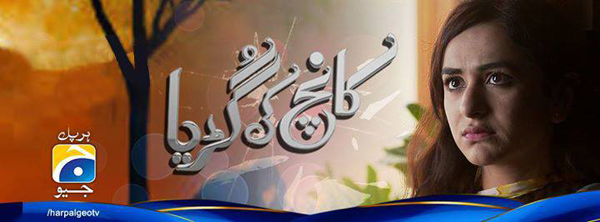 Photo: Kaanch Ki Guriya - Facebook[/caption]
The analogy in the name is very interesting as it depicts a woman who faces hardships and is fragile enough to get shattered like a mirror.
It is the story of a young cheerful girl who comes to live with her maternal family to convince her grandfather. It is a tale of family ties, revenge, corruption, innocence and positivity. The protagonist depicts a girl who needs love and acceptance in a family that hates and disapproves. The tragedy happens when the protagonist’s grandfather dies and the question of wealth comes up. This serial is a beautifully plotted story, very well executed. A great drama that stole hearts and support throughout!
2. Mumkin
[caption id="" align="alignnone" width="600"]
Photo: Kaanch Ki Guriya - Facebook[/caption]
The analogy in the name is very interesting as it depicts a woman who faces hardships and is fragile enough to get shattered like a mirror.
It is the story of a young cheerful girl who comes to live with her maternal family to convince her grandfather. It is a tale of family ties, revenge, corruption, innocence and positivity. The protagonist depicts a girl who needs love and acceptance in a family that hates and disapproves. The tragedy happens when the protagonist’s grandfather dies and the question of wealth comes up. This serial is a beautifully plotted story, very well executed. A great drama that stole hearts and support throughout!
2. Mumkin
[caption id="" align="alignnone" width="600"] Photo: Mumkin - Facebook[/caption]
Mumkin means possibilities. Mumkin, was a drama with
Photo: Mumkin - Facebook[/caption]
Mumkin means possibilities. Mumkin, was a drama with 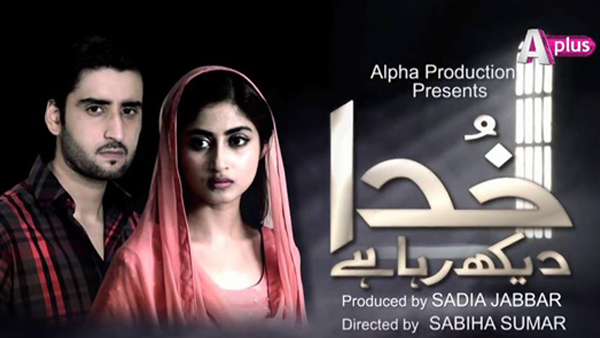 Photo: Khuda Dekh Raha Hai - Facebook[/caption]
With Bushra Ansari in the lead, the story is about a dominant religious woman who is an extremist in her values and raises her daughter in a conservative environment. This drama has questioned the social norms of society. The daughter, Sajal Ali, is married to a bad household where the husband is uncaring and an alcoholic.
Not only did this serial give the audience a closer look into reality, it was very powerful in terms of story, acting and direction.
4. Zid
[caption id="" align="alignnone" width="600"]
Photo: Khuda Dekh Raha Hai - Facebook[/caption]
With Bushra Ansari in the lead, the story is about a dominant religious woman who is an extremist in her values and raises her daughter in a conservative environment. This drama has questioned the social norms of society. The daughter, Sajal Ali, is married to a bad household where the husband is uncaring and an alcoholic.
Not only did this serial give the audience a closer look into reality, it was very powerful in terms of story, acting and direction.
4. Zid
[caption id="" align="alignnone" width="600"]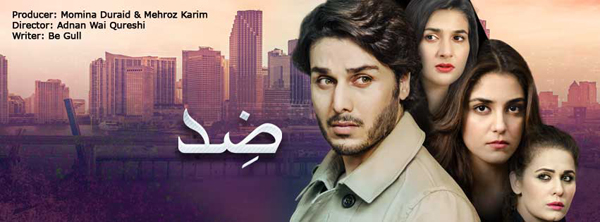 Photo: Zid - Facebook[/caption]
This is an uncelebrated drama. Zid advocates the freedom of right and how to use them. The protagonist is rebellious, outrageous and headstrong, which leads to conflicts with her inner self and society. All in all, I feel this drama was a great personification of all modern day trapped 25-year-old girls who wish to pursue their careers and want to find their own love. They are bull-headed; they question society and challenge the norms and values of the status of traditional women in Pakistan.
This was a very strong modern story showing how
Photo: Zid - Facebook[/caption]
This is an uncelebrated drama. Zid advocates the freedom of right and how to use them. The protagonist is rebellious, outrageous and headstrong, which leads to conflicts with her inner self and society. All in all, I feel this drama was a great personification of all modern day trapped 25-year-old girls who wish to pursue their careers and want to find their own love. They are bull-headed; they question society and challenge the norms and values of the status of traditional women in Pakistan.
This was a very strong modern story showing how  Photo: Sangat - Facebook[/caption]
There are some dramas that you watch just for entertainment, and then there are some that just take a part of your soul with them. Such dramas are the ones that you give your heart and mind to; Sangat is part of that category. The drama set the bar high for a great storyline, powerful characters and a well-planned plot. Saba Qamar, Mikael and Zahid Ahmed are the leading trio. The queens at home surely loved this!
Photo: Sangat - Facebook[/caption]
There are some dramas that you watch just for entertainment, and then there are some that just take a part of your soul with them. Such dramas are the ones that you give your heart and mind to; Sangat is part of that category. The drama set the bar high for a great storyline, powerful characters and a well-planned plot. Saba Qamar, Mikael and Zahid Ahmed are the leading trio. The queens at home surely loved this!
 2015 was no different from the previous years if we talk about the morning shows in Pakistan.
2015 was no different from the previous years if we talk about the morning shows in Pakistan. 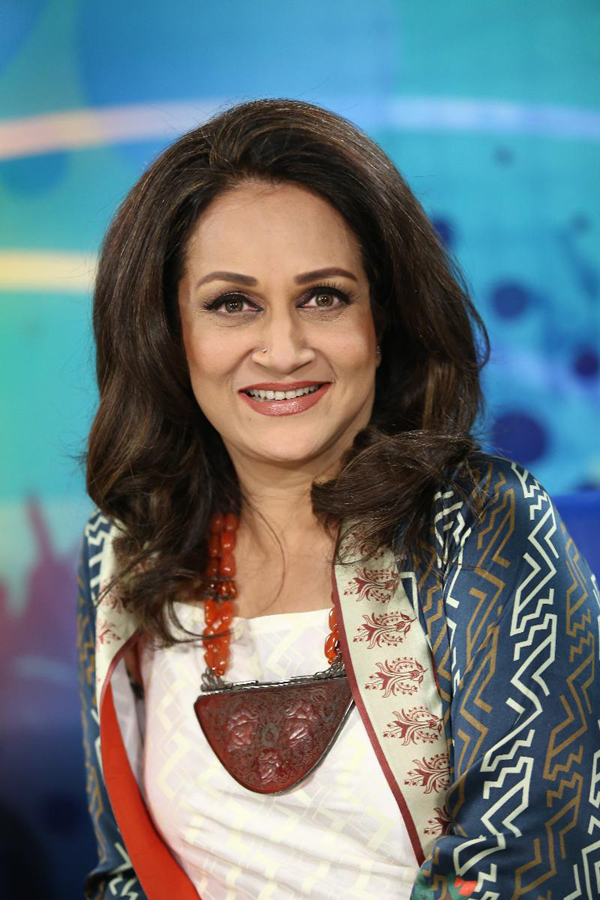 Photo: Facebook[/caption]
2015 left us with some realisations that no matter how much we like to watch morning shows or we simply loathe them, to be a morning show host is no easy job. It looks all fun and no work but it in reality it requires a lot of hard work and consistency and not everybody can be a good morning show host. We witnessed Bushra Ansari do a morning show for Geo TV for a couple of months. From Aangan Terha to Loose Talk to Saima Chaudhary, we know the versatility in acting Ansari is gifted with but that couldn’t work with being a morning show host. Similarly former news anchor, Madiha Naqvi couldn’t perform well as a morning show host for all.
3. Wedding weeks
From chiffon lehengas to well-coordinated dancing, the
Photo: Facebook[/caption]
2015 left us with some realisations that no matter how much we like to watch morning shows or we simply loathe them, to be a morning show host is no easy job. It looks all fun and no work but it in reality it requires a lot of hard work and consistency and not everybody can be a good morning show host. We witnessed Bushra Ansari do a morning show for Geo TV for a couple of months. From Aangan Terha to Loose Talk to Saima Chaudhary, we know the versatility in acting Ansari is gifted with but that couldn’t work with being a morning show host. Similarly former news anchor, Madiha Naqvi couldn’t perform well as a morning show host for all.
3. Wedding weeks
From chiffon lehengas to well-coordinated dancing, the 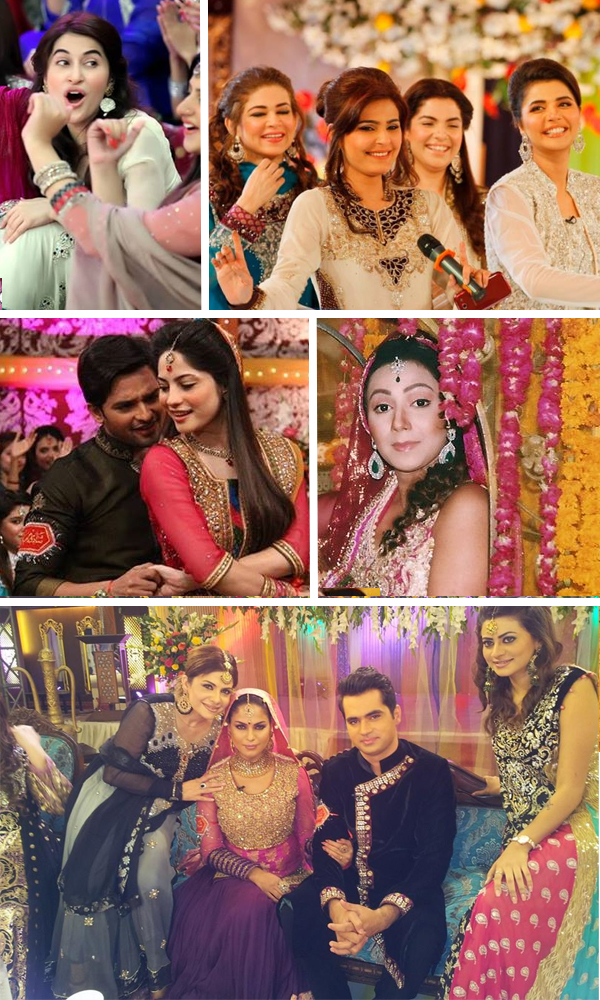 Many morning shows have these themes as a permanent part of their show that is stretched upon weeks at times instead of just one week. I have been trying to comprehend the purpose of these themes since their inception and my constancy at failing is parallel to the consistency with which these themes are repeated and adapted by even more channels.
Maybe, the idea of getting married is alien to our people and their morning shows are just trying to help get the people acquainted with the very concept of ‘marriage’. How I utterly fail to understand the need of such shows.
4. Let’s remarry the already married
Some morning show hosts try to innovate upon the brilliant idea of showing a wedding on a live show that they somehow convince celebrity couples who have already been married for years to play as bride and groom and then happens the re-enactment of the big day just to literally re- live their memories.
5. Any expecting celebrities around? Let’s throw them a baby shower.
There have been days when morning show hosts are tired of their jobs and need to do something to fill the two hour slot, they get paid for. So they scout for a belly with a bump in Pakistan’s land of fame. If the hunting succeeds, they kick off the celebrations for the mom-to-be. The set is painted all pink if it’s a girl, blue if it’s a boy and a mix of both if the gender is still a secret.
https://www.youtube.com/watch?v=4Wrc9yFHaWw
6. Mirror mirror on the wall, which morning show make girls fairest of them all?
A woman cherishes her beauty and that certainly is her right. But does beauty necessarily mean to be as white as snow? If any part of Pakistan was left uncontaminated with the flawed notion of
Many morning shows have these themes as a permanent part of their show that is stretched upon weeks at times instead of just one week. I have been trying to comprehend the purpose of these themes since their inception and my constancy at failing is parallel to the consistency with which these themes are repeated and adapted by even more channels.
Maybe, the idea of getting married is alien to our people and their morning shows are just trying to help get the people acquainted with the very concept of ‘marriage’. How I utterly fail to understand the need of such shows.
4. Let’s remarry the already married
Some morning show hosts try to innovate upon the brilliant idea of showing a wedding on a live show that they somehow convince celebrity couples who have already been married for years to play as bride and groom and then happens the re-enactment of the big day just to literally re- live their memories.
5. Any expecting celebrities around? Let’s throw them a baby shower.
There have been days when morning show hosts are tired of their jobs and need to do something to fill the two hour slot, they get paid for. So they scout for a belly with a bump in Pakistan’s land of fame. If the hunting succeeds, they kick off the celebrations for the mom-to-be. The set is painted all pink if it’s a girl, blue if it’s a boy and a mix of both if the gender is still a secret.
https://www.youtube.com/watch?v=4Wrc9yFHaWw
6. Mirror mirror on the wall, which morning show make girls fairest of them all?
A woman cherishes her beauty and that certainly is her right. But does beauty necessarily mean to be as white as snow? If any part of Pakistan was left uncontaminated with the flawed notion of  Photo: Facebook[/caption]
[caption id="" align="alignnone" width="600"]
Photo: Facebook[/caption]
[caption id="" align="alignnone" width="600"] Photo: Facebook[/caption]
7. Bored of wedding weeks? Let’s do it differently! Let’s hunt a groom down!
Photo: Facebook[/caption]
7. Bored of wedding weeks? Let’s do it differently! Let’s hunt a groom down!
 Be it aunties next door or morning show hosts, weddings are on their minds. The team of Good Morning Zindagi morning show thought to stand out by finding a suitor for film actress Laila. Potential suitors from all walks of lives competed in different rounds to prove themselves best to win Laila’s coveted heart. Weeks of entertainment passed by with an anti-climactic end to it when actress Meera’s brother who wasn’t even a competing suitor conquered Laila’s heart.
http://www.dailymotion.com/video/x2j6vbt
8. Aamir Liaquat’s journey from Aalim Online to Subh e Pakistan
[caption id="" align="alignnone" width="600"]
Be it aunties next door or morning show hosts, weddings are on their minds. The team of Good Morning Zindagi morning show thought to stand out by finding a suitor for film actress Laila. Potential suitors from all walks of lives competed in different rounds to prove themselves best to win Laila’s coveted heart. Weeks of entertainment passed by with an anti-climactic end to it when actress Meera’s brother who wasn’t even a competing suitor conquered Laila’s heart.
http://www.dailymotion.com/video/x2j6vbt
8. Aamir Liaquat’s journey from Aalim Online to Subh e Pakistan
[caption id="" align="alignnone" width="600"]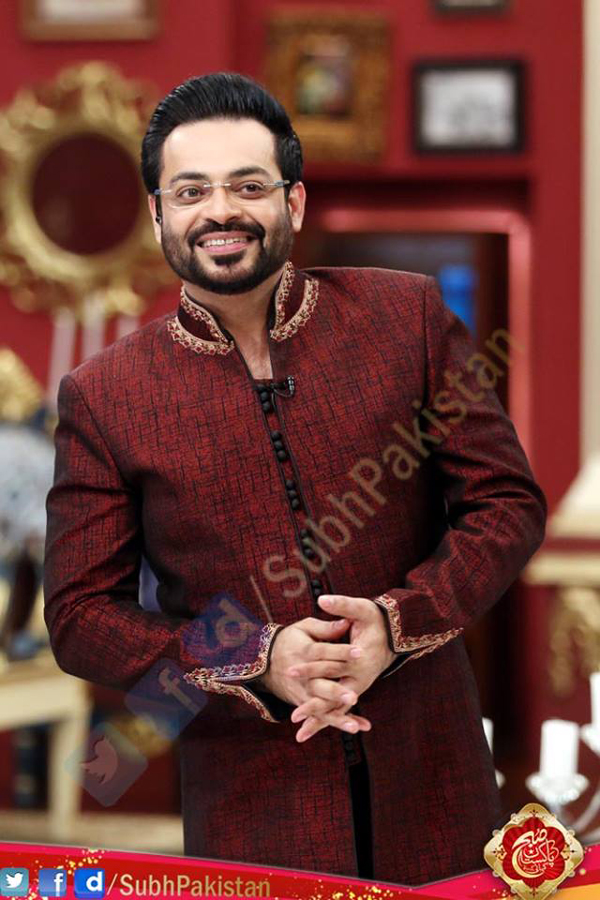 Photo: Facebook[/caption]
Seeing Saahir Lodhi being the only male morning show host in 2015,
Photo: Facebook[/caption]
Seeing Saahir Lodhi being the only male morning show host in 2015,  Photo: Sugar Pop[/caption]
Morning shows which are new and want to have a firm footing in this race of TRPs make sure they have a segment of fortune-telling either in form of horoscope, palmistry, tarot card reading or numerology. Our society that already has an external locus of control is given another opportunity to project their shortcomings onto fate; conveniently brushing away responsibilities of their deeds off of their shoulders.
10. Cruising away in Istanbul.
Newest addition to the morning show trend is Sunrise From Istanbul on See TV that is recorded in Istanbul. The show is hosted by Maria Wasti in a boat; where the ambiance is adorned with Turkish singing, Turkish cuisine and a chilly breeze over the rippling water along with a friendly chitchat with the guest without the interruption from live calls or other on-set distractions. This show is simple in its content and the format is contrary to the conventional morning shows.
[caption id="" align="alignnone" width="600"]
Photo: Sugar Pop[/caption]
Morning shows which are new and want to have a firm footing in this race of TRPs make sure they have a segment of fortune-telling either in form of horoscope, palmistry, tarot card reading or numerology. Our society that already has an external locus of control is given another opportunity to project their shortcomings onto fate; conveniently brushing away responsibilities of their deeds off of their shoulders.
10. Cruising away in Istanbul.
Newest addition to the morning show trend is Sunrise From Istanbul on See TV that is recorded in Istanbul. The show is hosted by Maria Wasti in a boat; where the ambiance is adorned with Turkish singing, Turkish cuisine and a chilly breeze over the rippling water along with a friendly chitchat with the guest without the interruption from live calls or other on-set distractions. This show is simple in its content and the format is contrary to the conventional morning shows.
[caption id="" align="alignnone" width="600"]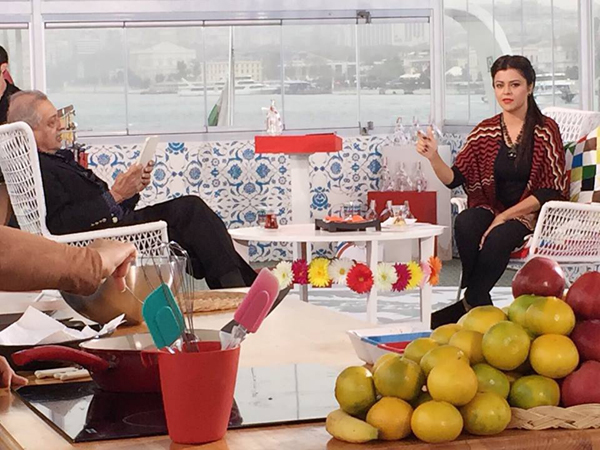 Photo: Facebook[/caption]
[caption id="" align="alignnone" width="600"]
Photo: Facebook[/caption]
[caption id="" align="alignnone" width="600"] Photo: Facebook[/caption]
[caption id="" align="alignnone" width="600"]
Photo: Facebook[/caption]
[caption id="" align="alignnone" width="600"]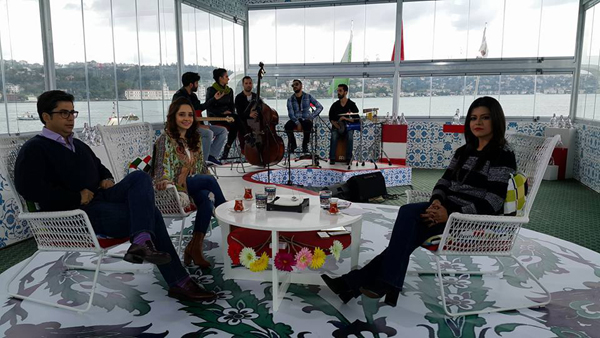 Photo: Facebook[/caption]
[caption id="" align="alignnone" width="600"]
Photo: Facebook[/caption]
[caption id="" align="alignnone" width="600"]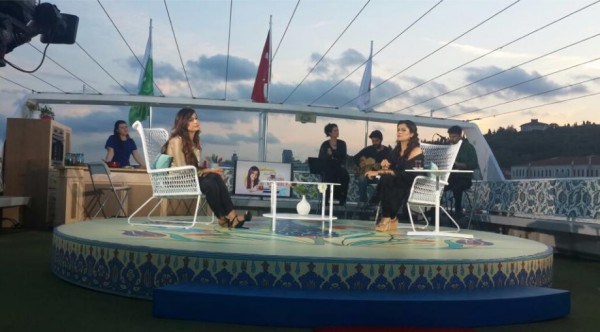 Photo: Facebook[/caption]
Here is a quick list of morning shows of 2015 that were somewhat similar in terms of themes and content:
Subh e Pakistan - Amir Liaquat Hussain
[caption id="" align="alignnone" width="600"]
Photo: Facebook[/caption]
Here is a quick list of morning shows of 2015 that were somewhat similar in terms of themes and content:
Subh e Pakistan - Amir Liaquat Hussain
[caption id="" align="alignnone" width="600"] Photo: Facebook[/caption]
Subha Ki Kahani - Madiha Naqvi
[caption id="" align="alignnone" width="600"]
Photo: Facebook[/caption]
Subha Ki Kahani - Madiha Naqvi
[caption id="" align="alignnone" width="600"] Photo: Facebook[/caption]
Utho Geo Pakistan - Bushra Ansari
[caption id="" align="alignnone" width="600"]
Photo: Facebook[/caption]
Utho Geo Pakistan - Bushra Ansari
[caption id="" align="alignnone" width="600"]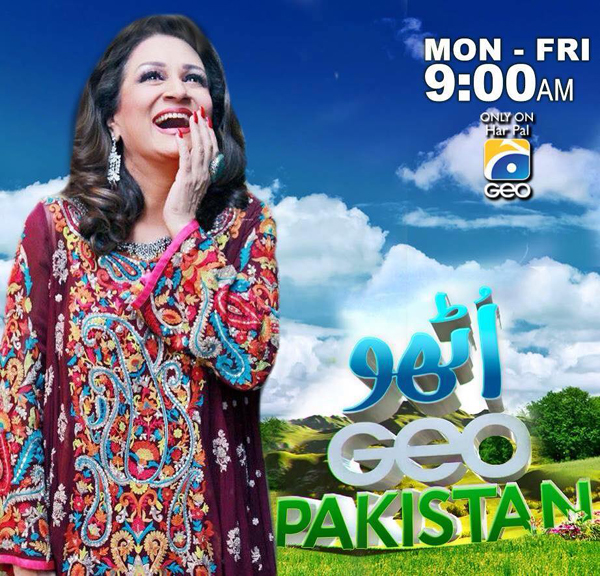 Photo: Facebook[/caption]
Sitaray ki Subha- Shaista Wahidi
[caption id="" align="alignnone" width="600"]
Photo: Facebook[/caption]
Sitaray ki Subha- Shaista Wahidi
[caption id="" align="alignnone" width="600"] Photo: Facebook[/caption]
Good Morning Pakistan- Nida Yasir
[caption id="" align="alignnone" width="600"]
Photo: Facebook[/caption]
Good Morning Pakistan- Nida Yasir
[caption id="" align="alignnone" width="600"]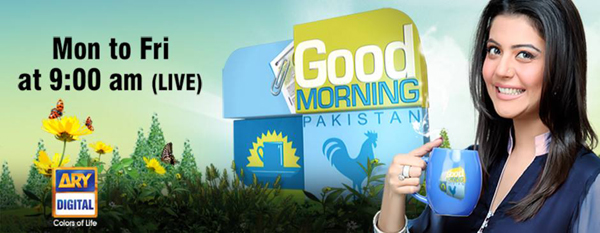 Photo: Facebook[/caption]
Nadia Khan Show- Nadia Khan
[caption id="" align="alignnone" width="600"]
Photo: Facebook[/caption]
Nadia Khan Show- Nadia Khan
[caption id="" align="alignnone" width="600"] Photo: Facebook[/caption]
Jago Pakistan Jago- Sanam Jung
[caption id="" align="alignnone" width="600"]
Photo: Facebook[/caption]
Jago Pakistan Jago- Sanam Jung
[caption id="" align="alignnone" width="600"] Photo: Facebook[/caption]
The morning show with Sanam Baloch- Sanam Baloch
[caption id="" align="alignnone" width="600"]
Photo: Facebook[/caption]
The morning show with Sanam Baloch- Sanam Baloch
[caption id="" align="alignnone" width="600"]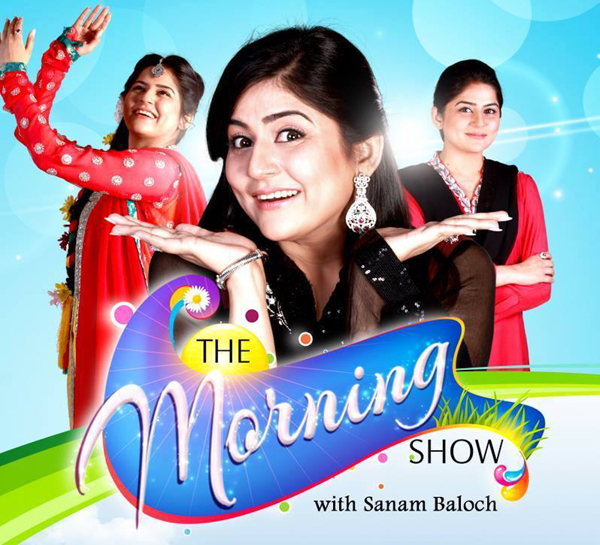 Photo: Facebook[/caption]
Satrungi - Javeria Saud
[caption id="" align="alignnone" width="600"]
Photo: Facebook[/caption]
Satrungi - Javeria Saud
[caption id="" align="alignnone" width="600"]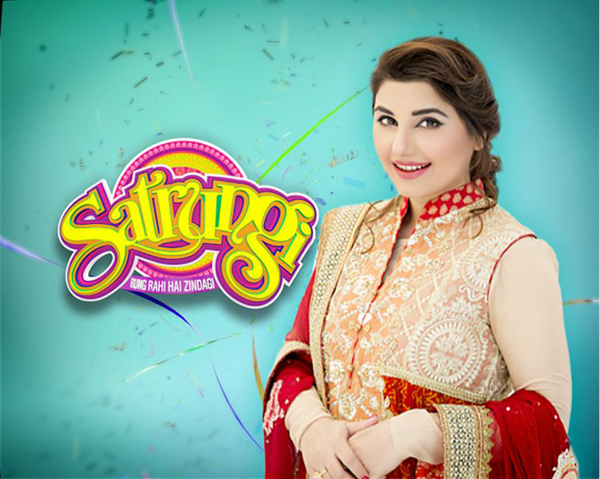 Photo: Facebook[/caption]
ATV Morning with Farah
[caption id="" align="alignnone" width="600"]
Photo: Facebook[/caption]
ATV Morning with Farah
[caption id="" align="alignnone" width="600"]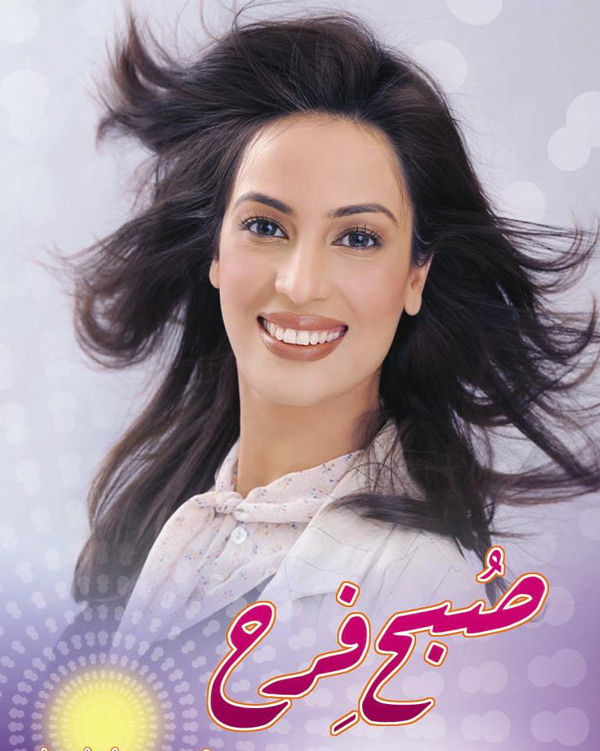 Photo: Facebook[/caption]
Morning with Juggun
[caption id="" align="alignnone" width="600"]
Photo: Facebook[/caption]
Morning with Juggun
[caption id="" align="alignnone" width="600"] Photo: Facebook[/caption]
Photo: Facebook[/caption]
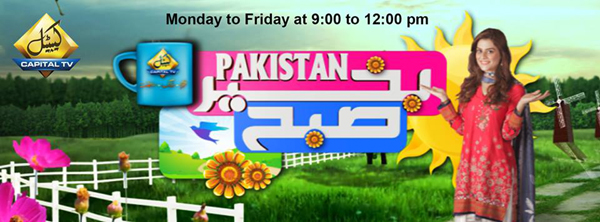 Photo: Facebook[/caption]
Subah Savery Samma k saath- Saahir Lodhi
[caption id="" align="alignnone" width="600"]
Photo: Facebook[/caption]
Subah Savery Samma k saath- Saahir Lodhi
[caption id="" align="alignnone" width="600"] Photo: Facebook[/caption]
And that’s the wrap folks! Here is to hoping that year 2016 is a year of improvement, rational content and moving-forward but not that of stagnation for the morning
Photo: Facebook[/caption]
And that’s the wrap folks! Here is to hoping that year 2016 is a year of improvement, rational content and moving-forward but not that of stagnation for the morning
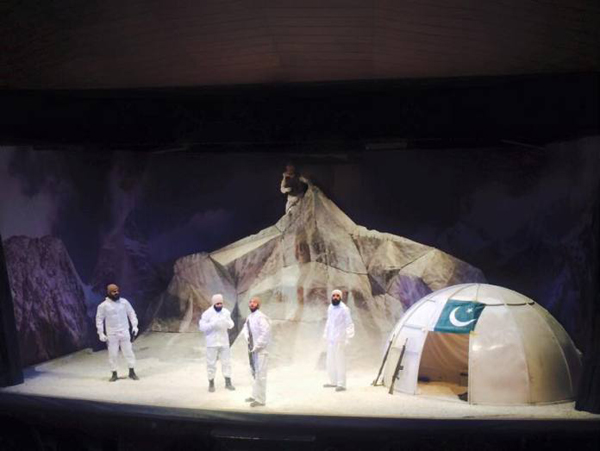 Photo: Siachen Facebook page[/caption]
I reached the venue dressed warmly as advised by the play’s Facebook page.
The play engrosses the audience immediately with soldiers pumping adrenaline with their
Photo: Siachen Facebook page[/caption]
I reached the venue dressed warmly as advised by the play’s Facebook page.
The play engrosses the audience immediately with soldiers pumping adrenaline with their  Photo: Siachen Facebook page[/caption]
The play delights with its brilliant use of auditorium space – as dreams seen by soldiers and letters being read by their family members are positioned all across the hall in different spotlights. This varied use of space maximises the engagement of the viewer, not allowing the attention to wander away from the jocularity of the dialogues.
I was particularly intrigued by the way the soldiers cracked jokes at each other’s expense. The Captain although was spared the brunt of their banter because of his rank. On one occasion though this reverence is overlooked with a jibe:
Photo: Siachen Facebook page[/caption]
The play delights with its brilliant use of auditorium space – as dreams seen by soldiers and letters being read by their family members are positioned all across the hall in different spotlights. This varied use of space maximises the engagement of the viewer, not allowing the attention to wander away from the jocularity of the dialogues.
I was particularly intrigued by the way the soldiers cracked jokes at each other’s expense. The Captain although was spared the brunt of their banter because of his rank. On one occasion though this reverence is overlooked with a jibe:
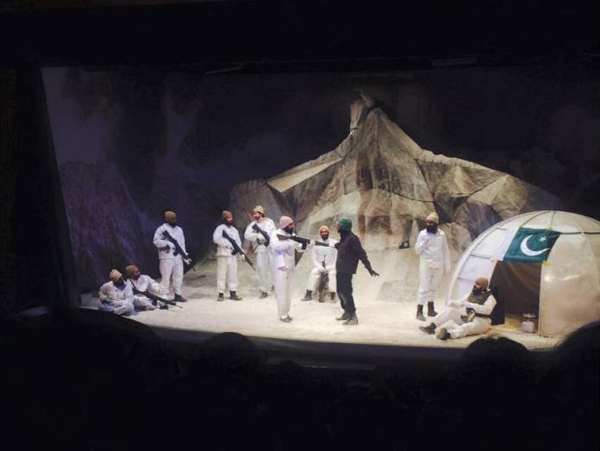 Source: Siachen Facebook page[/caption]
Anwar Maqsood maintains his signature by paying tribute to the epitome of all loves: the mother’s love. This is very emotionally celebrated when Karim Khan remembers his mother one last time as he receives
Source: Siachen Facebook page[/caption]
Anwar Maqsood maintains his signature by paying tribute to the epitome of all loves: the mother’s love. This is very emotionally celebrated when Karim Khan remembers his mother one last time as he receives 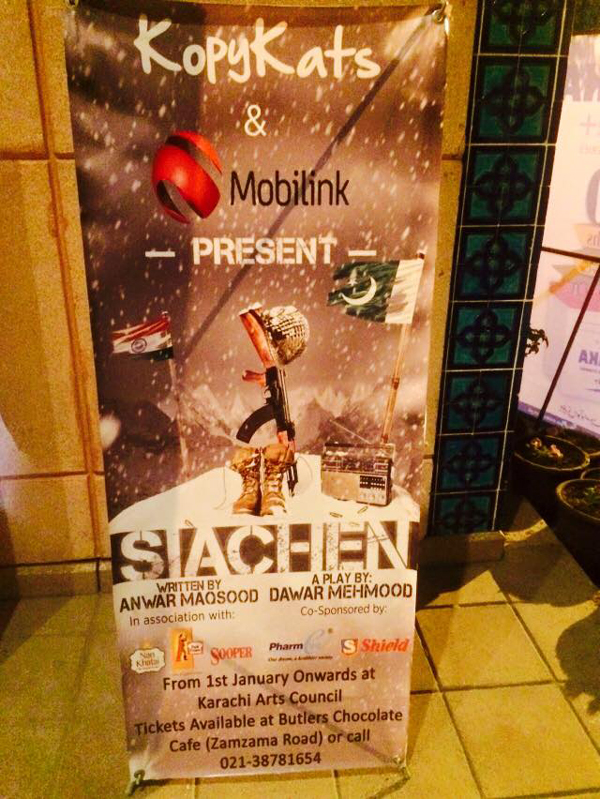 Source: Siachen Facebook page[/caption]
The director does need to take into account the eye levels of the audience seated at varying heights of the auditorium. The scenes in which one or two actors climbed up the peak to deliver dialogues at the raised height were hard to see by the audience members seated in the back rows.
Siachen is a spectacularly tangled mass of emotions overlapping one another. It’s a dance of emotions which preys on our sensitivities and sensibilities with the strongest of impact, keeping us in stitches and tears concomitantly.
The play’s duration is 90 minutes and its ticket will set you back Rs.1500.
[caption id="" align="alignnone" width="600"]
Source: Siachen Facebook page[/caption]
The director does need to take into account the eye levels of the audience seated at varying heights of the auditorium. The scenes in which one or two actors climbed up the peak to deliver dialogues at the raised height were hard to see by the audience members seated in the back rows.
Siachen is a spectacularly tangled mass of emotions overlapping one another. It’s a dance of emotions which preys on our sensitivities and sensibilities with the strongest of impact, keeping us in stitches and tears concomitantly.
The play’s duration is 90 minutes and its ticket will set you back Rs.1500.
[caption id="" align="alignnone" width="600"] Source: Siachen Facebook page[/caption]
It is scheduled to run till the end of January at the
Source: Siachen Facebook page[/caption]
It is scheduled to run till the end of January at the 
 A snow leopard at the Bronx Zoo, New York . Photo: Julie Larsen Maher/WCS[/caption]
I ended up spending the most time at this particular enclosure even though we weren't doing much except looking awkwardly at each other. Leo was probably confused about why I refused to walk away like all the other spectators he entertains throughout the day. I wish I could have explained to him that we share some history at least.
Perhaps I should have been upset that he was brought here, a place that isn’t exactly his home. But I was actually glad that he was. He may have been dislocated and brought miles away from home but he is probably still better off living here with some rights than back in Pakistan with none at all.
Looking at Leo made me think about the animal cruelty that we grew up watching in zoos of Pakistan. A zoo in itself, no matter how well maintained, is an infringement of
A snow leopard at the Bronx Zoo, New York . Photo: Julie Larsen Maher/WCS[/caption]
I ended up spending the most time at this particular enclosure even though we weren't doing much except looking awkwardly at each other. Leo was probably confused about why I refused to walk away like all the other spectators he entertains throughout the day. I wish I could have explained to him that we share some history at least.
Perhaps I should have been upset that he was brought here, a place that isn’t exactly his home. But I was actually glad that he was. He may have been dislocated and brought miles away from home but he is probably still better off living here with some rights than back in Pakistan with none at all.
Looking at Leo made me think about the animal cruelty that we grew up watching in zoos of Pakistan. A zoo in itself, no matter how well maintained, is an infringement of  South-African giraffe dies only a couple days after being shifted to Lahore Zoo. Photo: Express[/caption]
I looked back at Leo, as he took a big wide yawn sitting on a rocky terrain built specifically for him to replicate his style of living. He is in good shape and sits at a comfortable distance from the viewers. The enclosure is spacious enough to allow him to move out of sight and sit in peace should he please. His comfort is clearly the priority here and his interests are put before those of the audience.
Back in Pakistan, however, the
South-African giraffe dies only a couple days after being shifted to Lahore Zoo. Photo: Express[/caption]
I looked back at Leo, as he took a big wide yawn sitting on a rocky terrain built specifically for him to replicate his style of living. He is in good shape and sits at a comfortable distance from the viewers. The enclosure is spacious enough to allow him to move out of sight and sit in peace should he please. His comfort is clearly the priority here and his interests are put before those of the audience.
Back in Pakistan, however, the  Suzi raises her trunk as a group of zoo visitors pet her. Photo: Ayesha Mir/Express[/caption]
Suzi lived 25 years alone never seeing another of her own kind, yet zoo officials “could not confirm the cause of death”. For 25 whole years, she suffered among the heartless souls who saw all signs of her deteriorating health but chose instead to turn a blind eye to it. Only after she took her last breath did the
Suzi raises her trunk as a group of zoo visitors pet her. Photo: Ayesha Mir/Express[/caption]
Suzi lived 25 years alone never seeing another of her own kind, yet zoo officials “could not confirm the cause of death”. For 25 whole years, she suffered among the heartless souls who saw all signs of her deteriorating health but chose instead to turn a blind eye to it. Only after she took her last breath did the  10-year old Simba the lion was found dead at Karachi Zoological gardens in January 2018. Photo: APP[/caption]
The director of the Lahore Zoo insisted that death was a “natural process” and why wouldn’t it be when the animals are put in cages designed to ensure they have little left to live for. If Pakistani zoos lack the funding to provide basic necessities to animals, then there is no purpose to have them at all. It is not at all justified to watch animals suffer for our own pleasure. Their habitat is already invaded by our ever-growing population; the least we can do is provide them a half-decent home in our zoos.
I was brought out of my thoughts realising I had spent far too much time there and I had to move on from Leo’s enclosure. Minutes had passed by without a word but a promise had been made. I will make a futile attempt to be a voice for those still alive or rather left on a dying clock in the zoos of Pakistan. I owe this much to Leo and his kind back
10-year old Simba the lion was found dead at Karachi Zoological gardens in January 2018. Photo: APP[/caption]
The director of the Lahore Zoo insisted that death was a “natural process” and why wouldn’t it be when the animals are put in cages designed to ensure they have little left to live for. If Pakistani zoos lack the funding to provide basic necessities to animals, then there is no purpose to have them at all. It is not at all justified to watch animals suffer for our own pleasure. Their habitat is already invaded by our ever-growing population; the least we can do is provide them a half-decent home in our zoos.
I was brought out of my thoughts realising I had spent far too much time there and I had to move on from Leo’s enclosure. Minutes had passed by without a word but a promise had been made. I will make a futile attempt to be a voice for those still alive or rather left on a dying clock in the zoos of Pakistan. I owe this much to Leo and his kind back